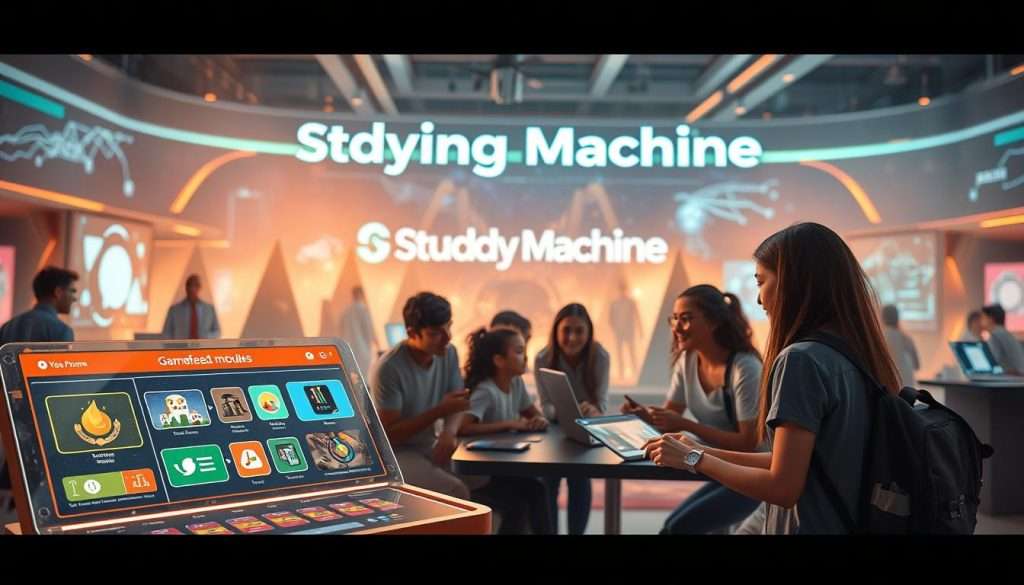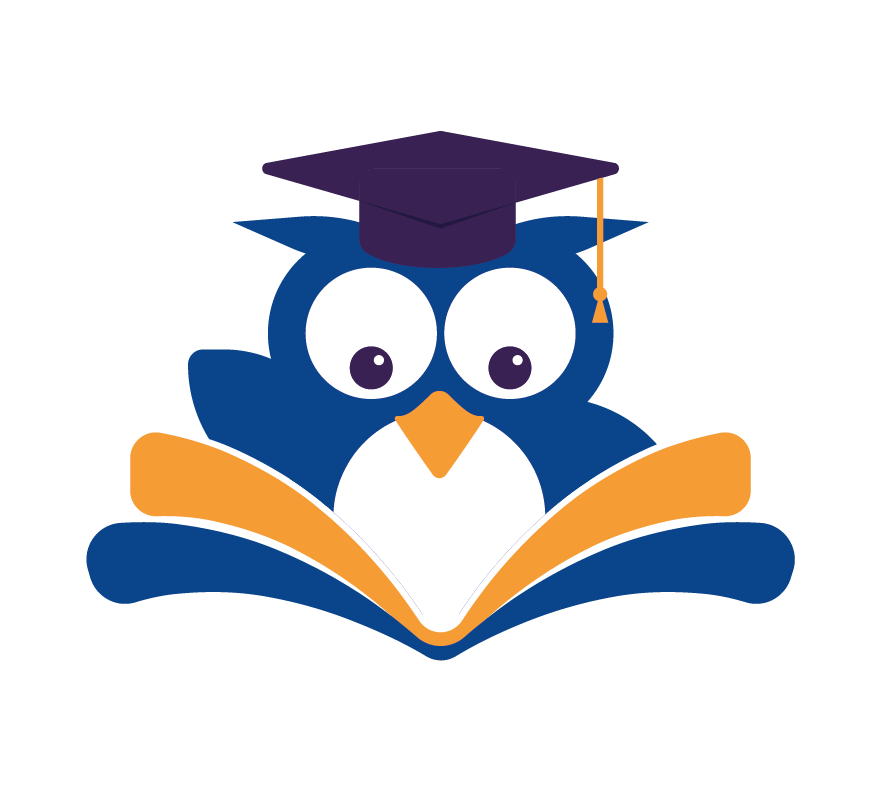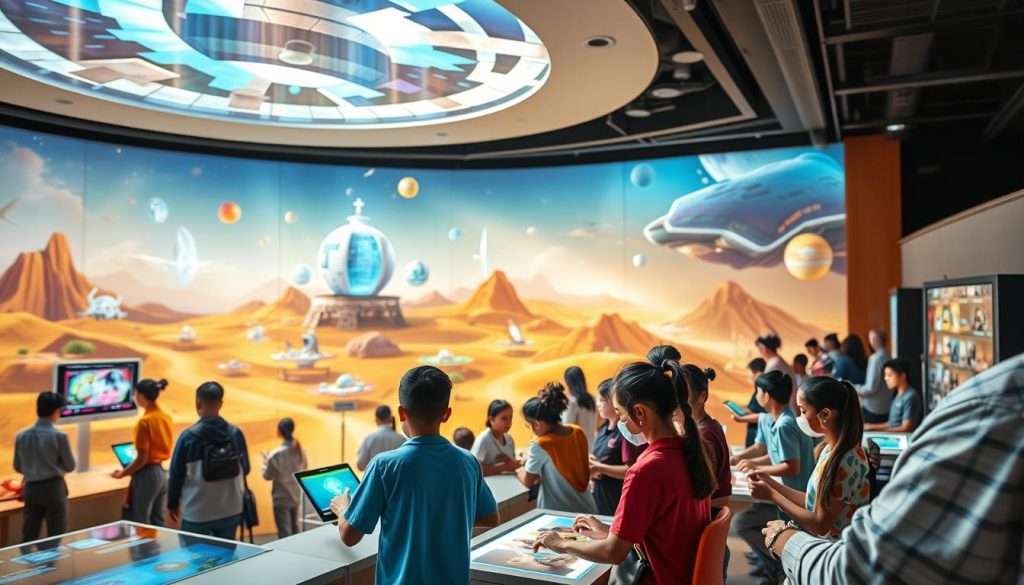Are you tired of studying the same old way? We get it! Traditional learning methods can be dull and unengaging. That’s where interactive learning comes in – a game-changer in the world of education.
By adding educational games and game mechanics to learning, we can make studying more enjoyable and effective. This approach, called gamifying your learning, boosts motivation, improves knowledge retention, and enhances overall learner engagement.
So, how can you start gamifying your learning? In this article, we’ll explore the benefits of this innovative approach. We’ll also give you practical tips on how to make the most of it.
Key Takeaways
- Discover how to make learning more engaging and fun
- Understand the benefits of gamifying your learning experience
- Learn practical tips on incorporating educational games into your study routine
- Find out how to boost motivation and improve knowledge retention
- Explore the potential of interactive learning in achieving your goals
The Science Behind Gamification in Education
Gamification in education works because it connects with our brain’s reward system. When we play games, our brains release dopamine, which makes us feel good and motivated. This is important for learning because it makes us more engaged and happy.
How Our Brains Respond to Game Elements
Game elements like points and badges make our brains happy. Studies show this happiness can make us more motivated and positive about learning. For example, a study found that students in a gamified learning environment did better in math than those in regular classes.
The Psychology of Motivation and Rewards
The science behind gamification is about motivation. It uses rewards and challenges to motivate us. For instance, getting badges can satisfy our need for external rewards, while solving challenges boosts our internal drive. Knowing this helps us use learning gamification techniques to improve game-based learning.
Why Gamify Your Learning? The Compelling Benefits
Imagine turning your study sessions into an exciting adventure. By gamifying your learning, you can make it more engaging and fun. This approach has many benefits that can improve your learning experience.
Increased Engagement and Motivation
Gamification adds elements like points, badges, and leaderboards. These tap into your competitive spirit. This can greatly increase your motivation to learn, as you’ll want to achieve higher scores and climb the ranks.
As a result, you’ll be more engaged in the learning process. You’ll enjoy the journey, not just the destination.
Better Knowledge Retention and Recall
Interactive learning experiences from gamification lead to better retention of information. When you’re actively participating, you’re more likely to remember key concepts. This is because gamification often involves repetition, reinforcement, and practical application of what you’ve learned.
This makes it easier to recall information later.
Reduced Learning Anxiety and Stress
Gamifying your learning can also reduce stress and anxiety from traditional study methods. By making learning more enjoyable and interactive, you can feel more comfortable with challenging material. This leads to a more positive and productive learning experience.
| Benefits | Description | Impact |
|---|---|---|
| Increased Engagement | Introduces competitive elements like points and badges | Boosts motivation and enjoyment |
| Better Retention | Facilitates interactive learning experiences | Improves recall and retention of information |
| Reduced Anxiety | Makes learning more enjoyable and interactive | Decreases stress and apprehension |
Core Elements of Effective Learning Gamification
To make learning fun, you need to know the key parts that keep you engaged. Good game-based learning has several important parts. These parts work together to make learning fun and motivating.
Points, Badges, and Leaderboards: The Basics
Points, badges, and leaderboards are basic parts of learning gamification techniques. Points give you rewards for doing tasks. Badges show you’ve achieved something. Leaderboards make you want to beat others.
For example, you get points for finishing a chapter. You get a badge for a tough assignment. And you climb the leaderboard by doing better than others.
Narrative and Storytelling Components
A good story can make learning more interesting. Storytelling in gamification helps you remember things better. It makes learning more fun.
For example, a language app might make lessons feel like a journey. Each level opens a new story or challenge.
Challenge and Progression Systems
Challenge and progression systems keep you interested. As you move up, things get harder but not too hard. This gamification in education keeps you learning well.
For example, a math app might make problems harder as you solve them. This makes you feel accomplished and keeps you going.
By using these key elements, you can make learning fun and effective. The trick is to mix fun with learning goals for the best results.
Step-by-Step Guide to Gamify Your Learning Process
Turning your learning into a game is simpler than you might think. We’ll guide you through easy steps to make your education fun and interactive.
Identifying Your Learning Goals and Metrics
To begin, define what you aim to achieve. Set clear goals and figure out how to track your progress.
Setting SMART Learning Objectives
Make your goals Specific, Measurable, Achievable, Relevant, and Time-bound (SMART). For instance, instead of “I want to learn Spanish,” say “I will learn conversational Spanish by dedicating 30 minutes, three times a week, for the next three months.”
Tracking Progress Effectively
Keep track of your progress with a journal, spreadsheet, or app. It could be as simple as checking off tasks or as detailed as logging study sessions.
Designing Your Personal Reward System
A good reward system keeps you motivated. It should be personal and meaningful to you.
Immediate vs. Delayed Gratification
Choose whether you prefer immediate rewards (like watching a funny video after a task) or delayed rewards (like a movie night after reaching a goal).
Creating Meaningful Rewards
Pick rewards that matter to you. If you love coffee, a free cup might motivate you. If you enjoy reading, a new book could be your reward.
Creating Challenges and Milestones
Break down big goals into smaller challenges and milestones. This makes learning more fun and manageable.
For example, learning a new language could mean having a 10-minute conversation with a native speaker. Reaching a certain level on a language app could be a milestone.

Digital Tools and Apps for Game-Based Learning
Now, making learning fun is easier than ever with digital tools and apps. These platforms use game-based learning and learning gamification techniques to make education more engaging. Let’s look at some popular categories of these tools.
Language Learning Platforms with Gamification
Language learning has become more fun with gamified platforms. Apps like Duolingo and Babbel use points, badges, and leaderboards to motivate learners. Duolingo, for example, turns language learning into a game with challenges, streaks, and rewards.
This approach makes learning enjoyable and helps learners remember more. It also encourages them to practice regularly.
Skill Development Apps with Game Elements
Many apps use game elements to develop different skills. For example, coding apps like Codecademy use gamification to teach programming languages. They offer challenges, projects, and a sense of progression to keep learners engaged.
Apps like Brilliant use interactive puzzles and games to teach complex subjects like math and science. This makes learning these subjects more enjoyable and accessible.
Productivity Tools with Gamified Features
Productivity tools have also adopted gamification to keep users engaged. Apps like Forest and Habitica turn tasks into games. Forest encourages users to stay focused by growing a virtual forest as they work.
Habitica turns your to-do list into a role-playing game. These tools make productivity more enjoyable and help users develop better habits.
| Tool/App | Description | Gamification Elements |
|---|---|---|
| Duolingo | Language Learning | Points, Badges, Leaderboards, Streaks |
| Codecademy | Coding Education | Challenges, Projects, Progression |
| Forest | Productivity | Growing Virtual Forest, Focus Timer |
| Habitica | Task Management | Role-Playing Game, Rewards, Quests |
By using these digital tools and apps, learners can make their educational journey more engaging and effective. Whether you’re learning a new language, developing a skill, or boosting productivity, there’s a gamified solution for you.
Social Aspects: Multiplayer Mode for Your Learning Journey
Learning with others can change the game. Gamification’s social aspects bring community, camaraderie, and competition into your studies. This mix boosts your motivation and engagement.
Competitive Learning: Leaderboards and Challenges
Competitive learning motivates you. Leaderboards and challenges let you test your skills against others. This drive can make you learn faster and better.
Language learning apps use leaderboards to rank users. This friendly competition makes learning fun and engaging.
Collaborative Learning Through Team Quests
Team quests offer a unique social benefit. They help you develop teamwork and communication skills. You also feel a sense of belonging and achievement.
Online courses often include group projects. These projects require teamwork and problem-solving. Working together, you learn from each other’s strengths and weaknesses.
Building Accountability with Learning Partners
A learning partner or accountability buddy can greatly help. Sharing goals and progress with someone motivates you. Regular check-ins keep you on track and help you overcome challenges.
This method is great for long-term goals or tough subjects. Having someone to report to keeps you committed and helps you reach your goals.
Implementing Gamification for Different Learning Styles
Not everyone learns the same way – different styles need different approaches. We understand that people learn in many ways. Game-based learning can be adjusted to meet these needs.
Visual Learners: Maps, Quests, and Visual Progress
Visual learners do well with maps, quests, and visual progress. Using visual aids like progress bars and badges can make learning fun. For example, a visual map can show your progress and what’s next.
Auditory Learners: Sound-Based Rewards and Challenges
Auditory learners benefit from sound-based rewards and challenges. This includes sound effects for right answers and voice-guided lessons. You can also use music or podcasts to make studying more fun.
Kinesthetic Learners: Interactive Learning Through Play
Kinesthetic learners learn best through interactive learning through play. Hands-on activities and quizzes that require movement are great. Try educational games that involve movement or use touch to help you learn.
| Learning Style | Gamification Elements | Examples |
|---|---|---|
| Visual Learners | Maps, Quests, Visual Progress | Progress bars, Achievement badges, Interactive diagrams |
| Auditory Learners | Sound-Based Rewards and Challenges | Sound effects, Voice-guided instructions, Podcasts |
| Kinesthetic Learners | Interactive Learning Through Play | Hands-on activities, Simulations, Interactive quizzes |
By matching learning gamification techniques to your style, you can learn better and enjoy it more.
Overcoming Common Obstacles in Learning Gamification
Starting your journey in gamifying learning can face some hurdles. But don’t worry, we’re here to help! We’ll look at common challenges and share tips to beat them.
Dealing with Motivation Plateaus
Motivation can drop when gamifying learning. To tackle this, try updating your game elements or slowly up the challenge.
Refreshing Your Game Elements
Refreshing your game can be easy. Just change the rewards or add new challenges. This keeps your learning fun and engaging.
Increasing Challenge Gradually
Slowly increasing the challenge keeps you motivated. It makes you feel like you’re getting better and achieving more.
Balancing Fun with Effective Learning
It’s key to balance fun with learning when gamifying. You should enjoy it but also reach your learning goals.
To find this balance, track your progress with a table like this:
| Learning Objective | Gamification Element | Progress |
|---|---|---|
| Improve language skills | Points system | 80% |
| Enhance problem-solving skills | Challenges and puzzles | 70% |
| Develop critical thinking | Debates and discussions | 90% |
Avoiding Gamification Burnout
Burnout from gamification happens when you do too much. It leads to tiredness and less motivation. To avoid it, pace yourself and take breaks.

By knowing these obstacles and how to overcome them, you can make learning both fun and effective.
Conclusion: Level Up Your Life Through Gamified Learning
We’ve looked into how gamification can change education. By adding game elements to your learning, you can get more involved and motivated. This approach works for students and anyone looking to learn more, helping you reach your goals.
We talked about using the science of gamification and setting your own goals. You can also use digital tools to make learning even better. So, why wait? Start making your learning more fun and effective today.
Embracing game-based learning makes learning fun and exciting. So, take the first step and start your gamified learning journey. You can do it!

